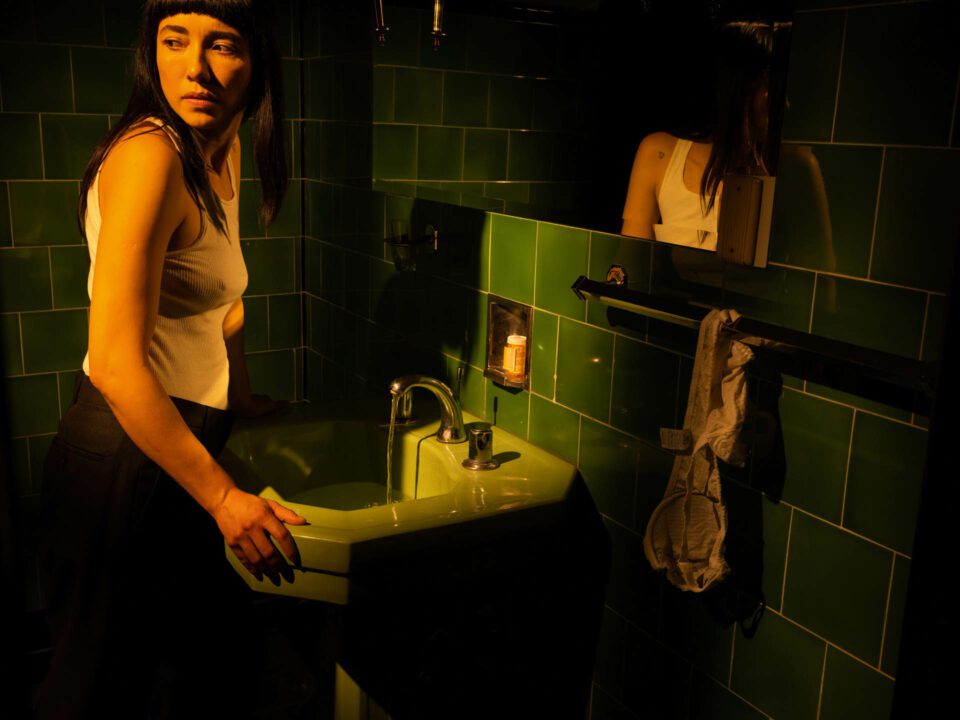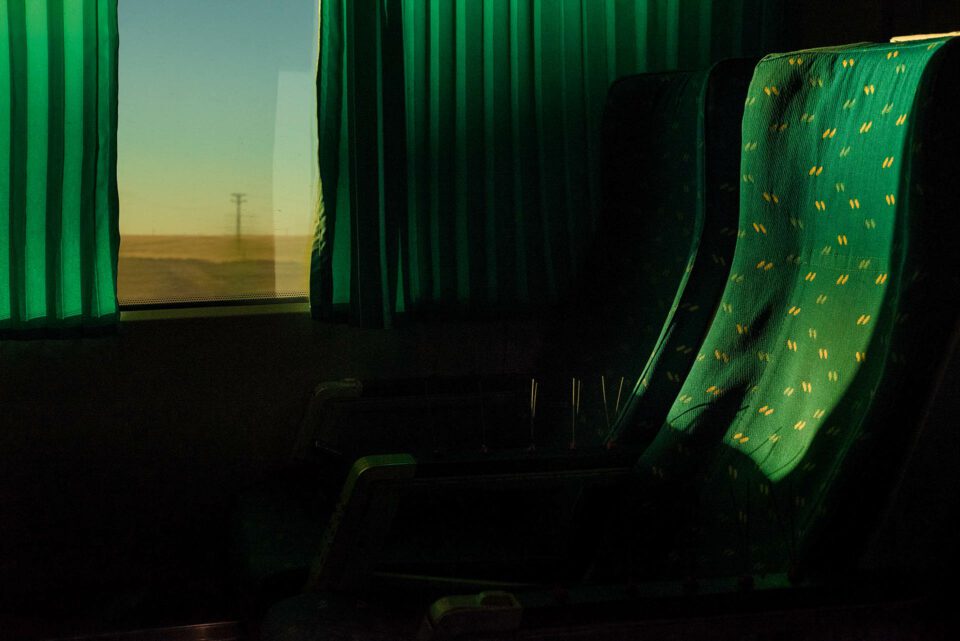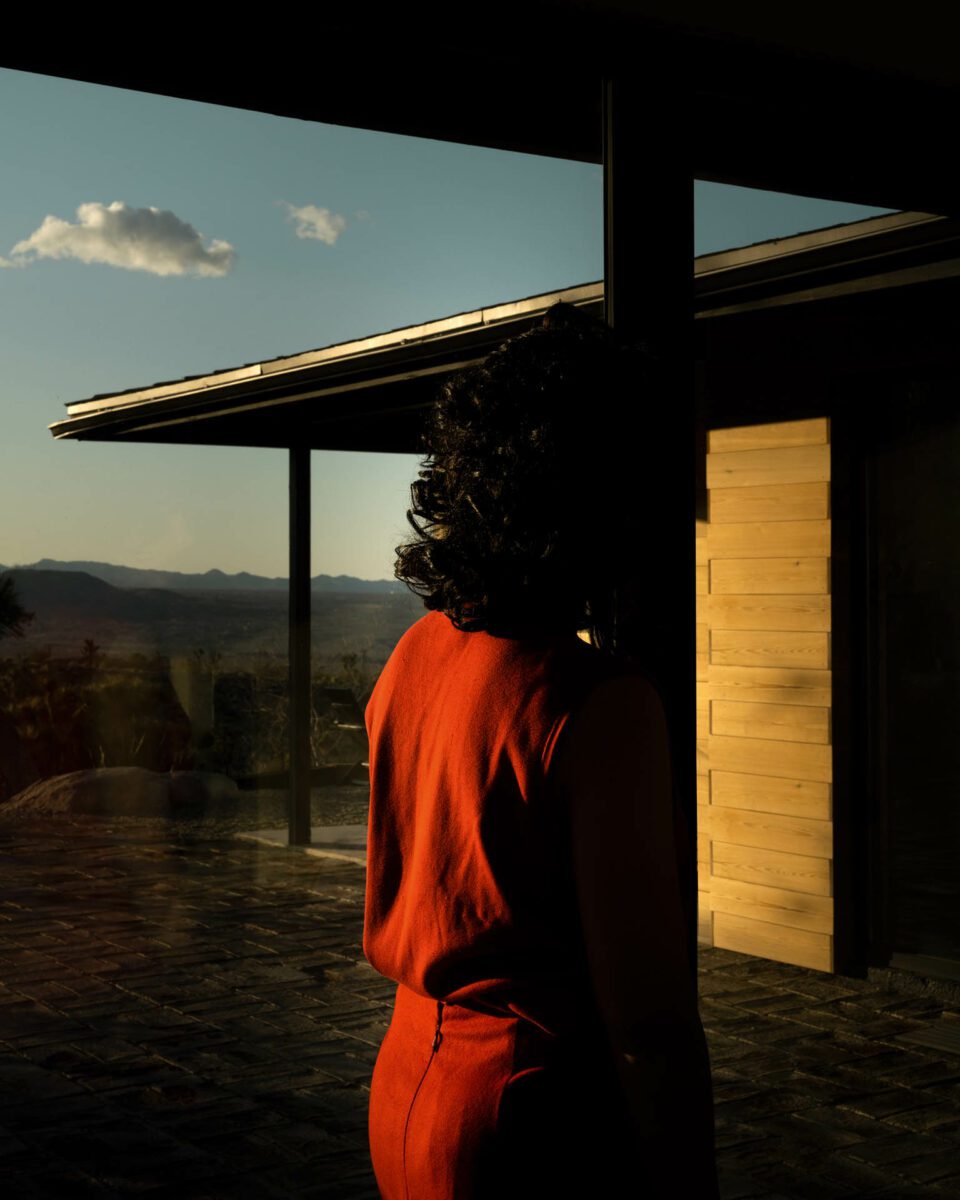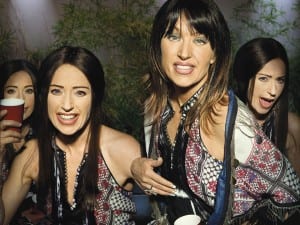Self-help is listed as one of the top 10 fastest growing industries on the internet. In the USA alone, there are over 22,000 life coaches, and the personal development business is worth $11 billion. It’s easy to draw a correlation between this boom and the rise of social media. In 2022, researchers at MIT Sloan School of Management found a “significant link” between the presence of Facebook and increases in anxiety and depression amongst college students. Evidence suggests that excessive use negatively affects self-esteem and life satisfaction. It’s a commonly held opinion that, whilst online platforms were initially designed to connect us, the algorithms that drive them are pushing us further apart. The question for artists is: how do we visualise this phenomenon?
This is where the work of Tania Franco Klein (b. 1990) comes in to play. The Mexican interdisciplinary artist, who works primarily with photography, gif and installation, is fascinated by the effects of media overstimulation. Her various series navigate feelings of emotional disconnection, performative stresses and the unfulfilled promises of the American Dream. It’s an approach that has garnered the attention of prestigious awards like the Aesthetica Art Prize, Foam Paul Huf, Sony World Photography and Prix Pictet. Her work can be found in the renowned collections of MoMA, New York, and the Getty Center, Los Angeles.

A: Do you remember the first time you took a picture?
TFK: My first camera was a Rollei 35 S. It was my grandfather’s, and I made terrible pictures with it, but it was a great first encounter to photography. I also experimented with photograms in the darkroom, and I think the concept of constructing an image through light really sparked my later conceptual interests. This experience influenced me much more than that early documentation I did with the Rollei.
A: Is there a key theme or idea that drives you to create?
TFK: I see my images as emotional worlds that exist somewhere between social anthropology, psychology and existentialism. My work explores the experience of everyday disconnection and, as such, I try to invite the viewer to reflect on contemporary life and the idea of the self, both individually and collectively. I also investigate the different social practices that cause disconnection, and the emotions that come with it. In general, my work has more questions than answers.
A: Positive Disintegration and Proceed to the Route examine the ramifications of life online, yet employ a midcentury vintage aesthetic to tell your story. Is the contrast of pre-digital visuals in today’s context intentional?
TFK: Both series exist in the same universe: a world obsessed with productivity, where burnout shapes the characters’ identities and everyday lives. The internet gives us instant gratification and full access to all kinds of information, leading to a continuous cycle of “self-improvement”. In Positive Disintegration, the characters are passive towards this state of play, whilst in Proceed to the Route they start becoming more active and hyper-aware. They want to change their reality. Beyond a mid-century aesthetic, I see my sets as places where time periods are mixed. There are eclectic symbols from different eras – starting at the beginning of late capitalism up until today. This is how time in the internet era operates: it’s nonlinear. The aesthetic evokes a sense of nostalgia for “better times past”, which weren’t necessarily all that nice in truth.

A: The retro look and feel of your work is distinctive. Is there a location that inspired your approach to staging?
TFK: I spent a lot of time, both as a kid and an adult, with my grandmother at her home. She was my person for art and life. Her apartment was in this beautiful mid-century building; a 5th floor space in Condesa, Mexico City, surrounded by 360- degree panoramic windows. The sun would come in at dusk and light up the whole place in a whimsical, majestic way. I don’t know if there is a word to describe the intense pleasure and feeling of looking at colours and textures bathed in a golden glow, but that’s what I have. It makes me feel very connected to the here and now, and it underlines the rawness and intensity of life. “Golden hour” is a short but very intense moment of the day where places take on a special shape.
A: Tell us about your most recent series, Break in Case of Emergency. It feels psychologically charged. What’s the story behind it? How do you hope viewers will respond?
TFK: This series was originally born out of my curiosity about depictions of ludic catharsis, and the breaking of societal norms, in cinema and TV. Specifically, I’m intrigued by how, as spectators, we get to enjoy a liberating experience through characters on-screen. I have an inside joke with my friends about my alter-ego called Lisa and we fantasise about what Lisa would do in certain scenarios. Just the thought of it gives a similarly empowering experience to that of watching such scenes in movies. There is a Czech film from the 1960s called Daisies. It’s by Věra Chytilová, and it very much presents that feeling for me. As the project developed, I concentrated on creating a spectrum of images – from dark to humorous and back to dark again.
A: What is your relationship with the figures in your pictures? Would you say they are reflections of yourself?
TFK: The characters in my series are constantly evolving; each body of work is, in a way, a continuation of the previous one. In Positive Disintegration, my characters are more passive about their situations, mostly always trapped, at the mercy of their anxiety and desperation. The figures in Proceed to the Route are looking for a way out of their circumstances and, ultimately, out of themselves. For Break In Case Of Emergency I bring them back to domestic spaces, but this time they are on the verge of destroying or morphing their surroundings. It’s this spectrum of being empowered whilst experiencing complete emotional self-destruction. Subconsciously, I always end up finding myself in my work. When I look back to the time when I was shooting a big part of this series, I realise I was going through the darkest period of my life. All my relational boundaries were being trespassed, so I guess all of that ended up in the work. Maybe there is more of Lisa there than I had intended originally.

A: How would you describe your visual language? Your use of colour, light and shadow is particularly striking.
TFK: There is always something ambiguous and absurd about the components of my pictures – not only within the standalone images, but also in the way the narrative between them is composed through fragments. Strong light and shadow allows me to incorporate the duality of my characters’ emotions and the universe in which they exist. The parts of the scene that shine are equally as important as the bits that are rendered invisible through darkness, or as the things happening outside of the frame.
A: Self portraiture has a long history – from Francesca Woodman to Claude Cahun, Cindy Sherman and Zanele Muholi. What inspired you to start exploring the genre?
TFK: My first self-portraits were taken back in 2009. I wanted to test things to understand how lighting worked but was too shy to ask others to stand with me through the process. I would hide in my bathroom and try to experiment with different ideas. A few years later, when I started taking my practice more seriously, I began to cast people on the streets and work with my grandma and her friends. It wasn’t until 2016 that I went back to self-portraits as a way of keeping my practice alive. I was very anxious at the time, and I couldn’t cope with the idea of managing other people’s expectations of their image in my work. It was basically a case of making a choice between using myself, or not doing anything at all.
A: What did you take away from working in this manner?
TFK: I knew most of my characters would exist almost anonymously in the pictures, so it made the experimentation and performative aspect of my work much more interesting. I always had myself everywhere I travelled, and there were no constraints or limitations on the way I could position myself in the frame. I would say my body was at the service of the wider message of the series, rather than at the mercy of representing me. I am quite nocturnal, so, for a period of my life, a lot of my work was done between one and five o’clock in the morning. It was rather liberating.

A: Who, or what, have been your big creative influences?
TFK: I take inspiration from different backgrounds. There’s a very strong academic influence, drawing on thinkers like Byung-Chul Han and Marc Augé. This gives me a strong structure upon which to build my projects. I also bring in elements from icons of photography like Harry Gruyaert, Jimmy De Sana, Jo Ann Callis, Nan Goldin, Larry Sultan, Stephen Shore and William Eggleston. I have a strong connection to multimedia – video artists who deeply inspire me are Bill Viola, Pipilotti Rist and Tony Oursler.
A: Can you speak about a highlight of your career so far?
TFK: Recently, MoMA in New York acquired the first chapter of a long-term project I started in 2022 called Subject Studies, along with a gif video piece called Breathe, (self portrait, 2019). That is something I never even dreamed could happen. I didn’t think it was possible at this age. The museum’s Senior Curator of Photography, Roxana Marcoci, is so wonderful. I have, for a long time, admired the work and exhibitions she puts together with her team. Witnessing the level of love and respect that they carry for artists – at such a high-level institution – was a truly life affirming experience, and it permanently changed me.
A: What are you working on right now, as 2024 unfolds?
TFK: I am currently preparing the next two chapters of Subject Studies, and am in the beginning stages of a travelling exhibition and a publication of Mercado de Sonora (2019).
Tania Franco Klein’s forthcoming projects can be found online.
Words: Frances Johnson
Image credits:
1. Tania Franco Klein, from Positive Disintegration, (2016-2018).
2. Tania Franco Klein, from Positive Disintegration, (2016-2018).
3. Tania Franco Klein, from Positive Disintegration, (2016-2018).
4. Tania Franco Klein, from Proceed to the Route, (2018-Ongoing).
5. Tania Franco Klein, from Proceed to the Route, (2018-Ongoing).





